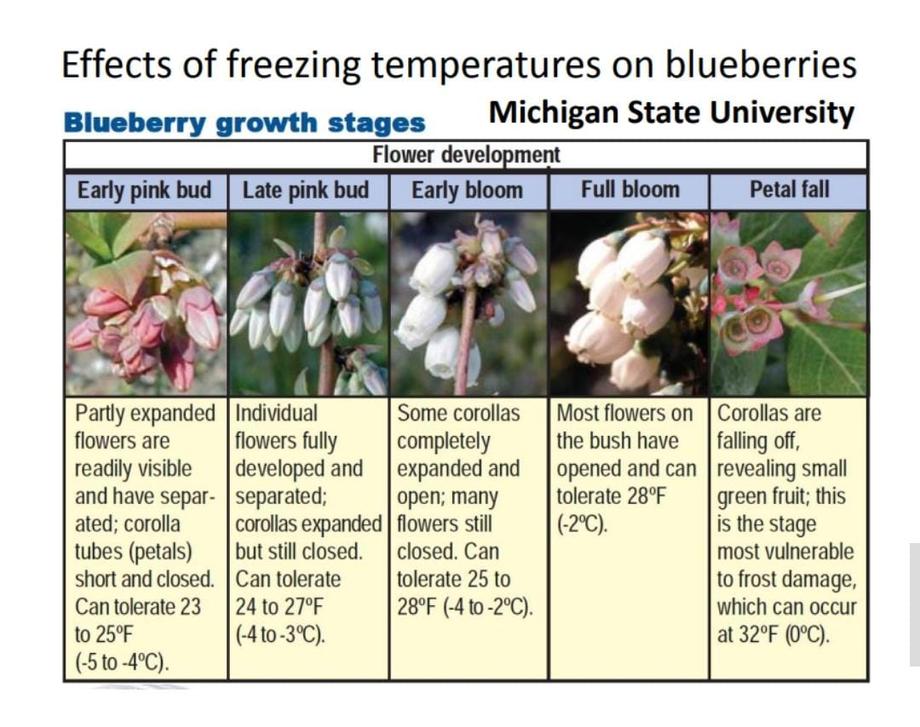Blueberries' sensitivity to frost varies significantly depending on the flower development stage. Understanding the critical temperature thresholds for each stage is essential for growers in order to implement effective frost protection strategies. A study conducted by Michigan State University provides a useful practical reference to monitor risks and adopt timely countermeasures.
Flower Development Stages and Frost Tolerance

1. Early Pink Bud
At this stage, the partially expanded flowers are clearly visible and separated; the corolla tubes (petals) are short and closed.
Frost tolerance: from -5°C to -4°C (23–25°F).
Risk: low, but sensitivity begins to increase.
2. Late Pink Bud
Flowers are fully developed and separated, with expanded but still closed corollas.
Frost tolerance: from -4°C to -3°C (24–27°F).
Risk: moderate, as the internal structure of the flower becomes more exposed.
3. Early Bloom
Some corollas are fully expanded and open, while many flowers remain closed.
Frost tolerance: from -4°C to -2°C (25–28°F).
Risk: high, as floral tissues start becoming more vulnerable.
4. Full Bloom
Most flowers on the bush are fully open.
Frost tolerance: -2°C (28°F).
Risk: very high, as open flowers are extremely sensitive to frost damage.
5. Petal Fall
Petals fall off, revealing the newly formed green berries.
Frost tolerance: 0°C (32°F).
Risk: maximum. At this stage, the fruits are highly susceptible to frost and freeze damage.
Protection Strategies
The critical window for frost protection extends from the beginning of bloom to petal fall. The most common protection strategies include:
Overhead irrigation, which uses the heat released during water freezing to keep the flower temperature near 0°C;
Forced air circulation or wind machines, to disrupt stagnant cold air layers;
Temporary covers, where applicable, to limit nighttime heat loss.
Understanding the phenological stage of the blueberry and its critical temperature thresholds allows for optimized frost protection interventions and reduced yield losses.










